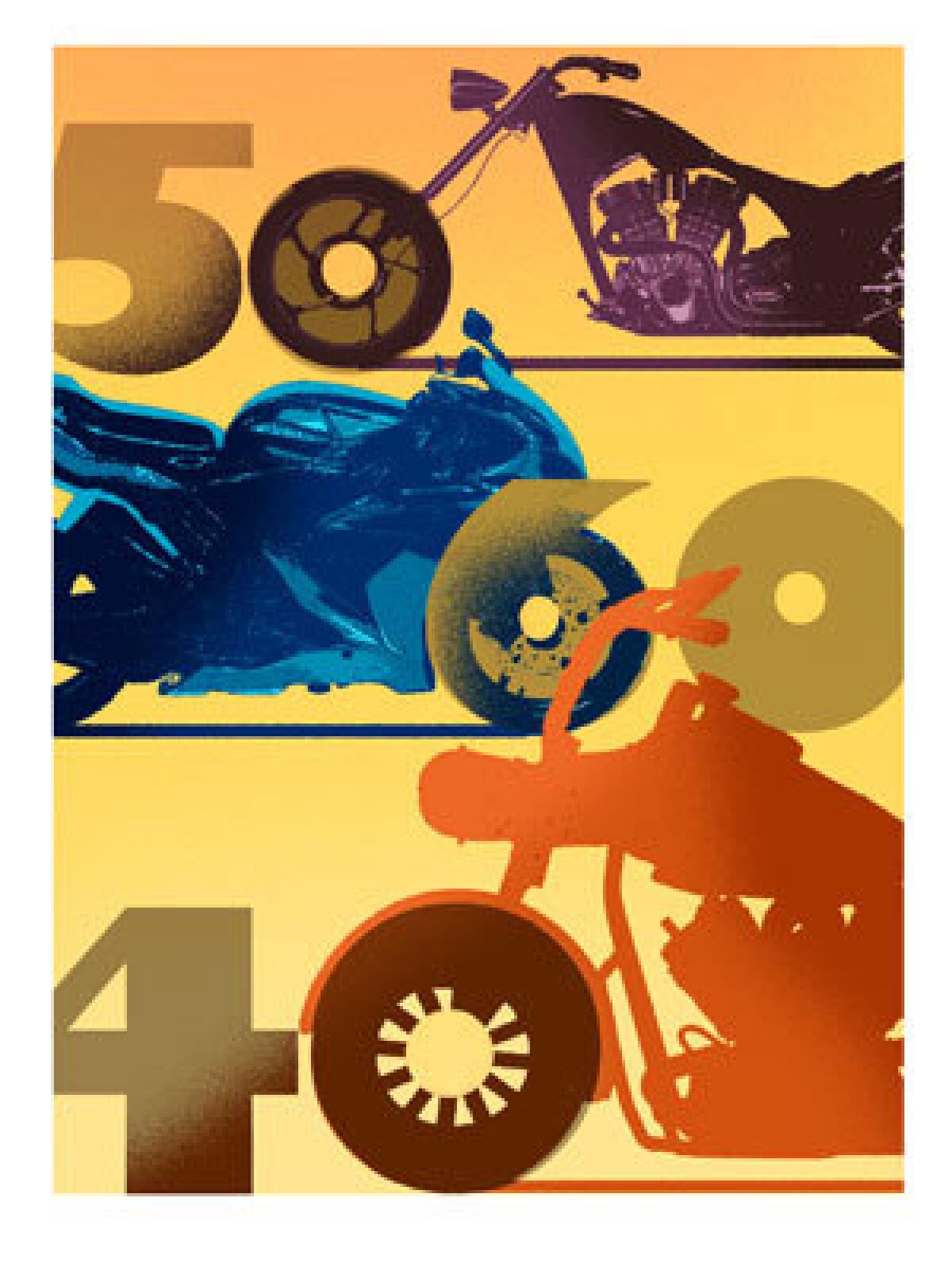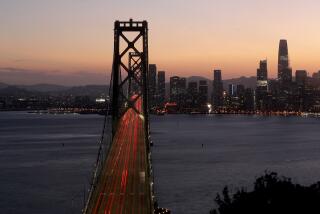The measure of motorcycles’ MPG

Motorcycles get about 50 miles to the gallon. That’s a general statistic trotted out by motorcycle manufacturers, government representatives, individual riders, your mailman. But specific MPG figures for specific models? That’s been difficult to find.
There are any number of reasons why motorcycle manufacturers have been loath to give actual MPG figures for actual models with any consistency. Bikes are already fuel-efficient, so differences in their MPGs aren’t considered as important. Besides, actual MPGs vary wildly depending on how a bike is ridden.
Even more significant, there isn’t an industrywide protocol for motorcycle MPG testing. Unlike with cars, federal law doesn’t require motorcycle manufacturers to perform fuel-economy tests or, if they do, to reveal their numbers, since bikes make up such a small percentage of overall vehicles and already get such great mileage.
But with gas prices nearing $4 per gallon and increasing numbers of commuters considering two wheels as a more economical way to get around, manufacturers are beginning to play the MPG trump card as a means of wooing customers in a down market.
On Tuesday, Yamaha released specific MPG figures for the six scooters in its model lineup. Less publicly, but more significantly, Yamaha is also making MPG figures available for its 27 other street bikes; dealers and customers just need to call Yamaha’s customer relations department ([800] 962-7926) and ask for them.
In May, Suzuki will also expand its offering of fuel-economy specifics in an ad campaign that will trumpet MPG figures for half of its street bikes and scooters, including its SV650 (which boasts 54.8 mpg), Burgman 650 (38.1 mpg), Bandit 1250 (39 mpg) and other models.
Source of the numbers
Since there’s no standardized motorcycle MPG test, where are these fuel-economy figures coming from? In the case of Yamaha, Suzuki and Harley-Davidson (which has been providing MPG figures since 1982), they’re based on the EPA emissions test the manufacturers are already required to perform to sell bikes in the United States.
The Federal Test Procedure, or FTP, is a specific protocol “designed to measure a vehicle’s tailpipe emissions under urban driving conditions,” according to EPA regulations. Run on a chassis dynamometer, as opposed to a track or streets, it involves a series of accelerations, decelerations, idling, cold starts and hot starts and covers a distance of 11 miles. The average speed is 21 mph. The average ambient temperature: 75 degrees.
Although the FTP is designed to measure the various pollutants spewing from a tailpipe, the CO2 produced during the test can be used to calculate MPG as well. Absent an official, government-mandated fuel-economy test for motorcycles, the FTP, it seems, is becoming the de facto procedure.
Automobile manufacturers are also legally required to use the FTP, plus four other tests. Together the tests are designed to represent real-world driving conditions and determine a vehicle’s fuel economy. The city and highway estimates are based on a combination of data from all five tests.
While Harley-Davidson uses the FTP to determine city mileage figures, the majority of FTP-derived motorcycle MPGs don’t distinguish between city and highway riding. Nor do these MPGs represent real-world riding conditions, as reflected in the four additional tests required of automobile manufacturers, because they were never intended to measure a motorcycle’s fuel economy -- just its emissions. That’s why the MPGs offered by motorcycle manufacturers often come with the term “estimated,” as well as various disclaimers that will let the manufacturers’ legal departments rest easy if real riders in the real world end up with fuel-economy numbers that are less than what the manufacturers claim.
The Yamaha disclaimer, for example, says a rider’s actual mileage “will vary depending on road conditions, how they ride, and the maintenance of each vehicle, vehicle accessories, cargo that may be carried and the operator’s and passenger’s weight.”
That’s a lot of variables, but that’s also a short list. Real-world mileage is also affected by a rider’s clothing and body shape, as well as ambient air temperature, altitude, weather and road conditions, among other things.
Demand for efficiency
There are so many variables, in fact, that specific MPG figures almost seem silly. But the industry tends to respond to market demand, and the market, which has traditionally been enthusiast-driven, is now expanding to include “near enthusiasts” and transportation-oriented consumers, who are demanding efficiency, not just horsepower and torque.
The evidence for that isn’t so much official as anecdotal because in-the-moment motorcycle data are so scarce. According to the 2003 Motorcycle Industry Council’s Owner Survey, the most recent study available, “practicality” ranked sixth out of 11 possible “reasons for riding motorcycles.” At the time, motorcycle sales were on the rise and gas prices were reasonable, so the highest score went to “fun/recreation.” The lowest: “utility/business use/household chores.”
A spokesman for the Motorcycle Industry Council won’t say what its 2008 Owner Survey, currently underway, is finding, but fuel prices and global warming headlines are likely to shift some people’s “reasons for riding.” At least that’s the feeling I’m getting from readers, who regularly ask where they can find MPG figures and why they are missing from my column. The short answer: They haven’t existed across the board in any real and verifiable way.
If escalating fuel prices create any good in the world, perhaps reliable and widespread MPG figures will be among the positive effects. In the meantime, reviews here will begin to include our real-world MPG findings.
More to Read
Start your day right
Sign up for Essential California for news, features and recommendations from the L.A. Times and beyond in your inbox six days a week.
You may occasionally receive promotional content from the Los Angeles Times.






